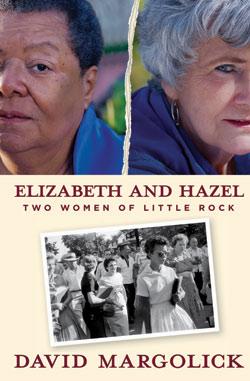 As students enter their school buildings this August, it is timely to think about what the start of the school year was like fifty-five years ago when Elizabeth Eckford and eight other students who were the first black students to enroll in Central High School in Little Rock, Arkansas. I would highly recommend that you read “ELIZABETH AND HAZEL: Two Women of Little Rock” by David Margolick. In this non-fiction book, Margolick describes the events building up to the day that fifteen-year-old Elizabeth was photographed as she was swarmed by an angry mob at the steps of Central High School and tells the story of how this iconic photograph became a symbol of the civil rights movement across the world.The author traces what happened to Elizabeth throughout the ordeal she experienced during the eventful year that Central was desegregated and the difficulties she faced throughout her life. He investigates how the worldwide dissemination of the photograph affected Hazel Bryan, the white teenager captured in the photograph as she screamed epithets at Elizabeth. Margolick describes life in the Jim Crow South in the fifties and how the civil rights actions underway in Little Rock changed the lives of the Elizabeth and her family, Hazel, the other eight students of the Little Rock Nine, and the white students who attended Central High.
As students enter their school buildings this August, it is timely to think about what the start of the school year was like fifty-five years ago when Elizabeth Eckford and eight other students who were the first black students to enroll in Central High School in Little Rock, Arkansas. I would highly recommend that you read “ELIZABETH AND HAZEL: Two Women of Little Rock” by David Margolick. In this non-fiction book, Margolick describes the events building up to the day that fifteen-year-old Elizabeth was photographed as she was swarmed by an angry mob at the steps of Central High School and tells the story of how this iconic photograph became a symbol of the civil rights movement across the world.The author traces what happened to Elizabeth throughout the ordeal she experienced during the eventful year that Central was desegregated and the difficulties she faced throughout her life. He investigates how the worldwide dissemination of the photograph affected Hazel Bryan, the white teenager captured in the photograph as she screamed epithets at Elizabeth. Margolick describes life in the Jim Crow South in the fifties and how the civil rights actions underway in Little Rock changed the lives of the Elizabeth and her family, Hazel, the other eight students of the Little Rock Nine, and the white students who attended Central High.
The book examines the role of the press and television media during the Little Rock events and tells the history of how photographer Will Counts captured the scene with his camera, and the chain of events that lead to this memorable photograph of Elizabeth and Hazel becoming a worldwide sensation and one of the most famous images of the civil rights movement. Elizabeth’s life after her high school years is fraught with disappointments and misfortune. Amazingly, she and Hazel reconnect in the late 1990s and form an improbable friendship. Eventually, as a result of bitter disagreements and distrust, their relationship flounders.
Educators should read this book to be reminded about why Brown v. Board of Education was at the time, and still is, one of the most significant court rulings to shape education policy in our country. The cruelties Elizabeth and the eight other students experienced in their classrooms and the awful indignities and threats that their families suffered are a stunning reminder about the disgraceful role played by Governor Oval Faubus of Arkansas, the school administrators in Little Rock, and all but a few of the teachers. Through the intentional omission of protection and supports, school leaders not only allowed countless abuses, taunts, and cruel acts at the hand of students to occur, but sadly, teachers and administrators also overtly displayed their bigotry. Day after day, the Little Rock Nine exhibited the courage to keep coming to school and demonstrated amazing restraint by not reacting as they were called degrading names, shoved in the hallways, and scalded in the locker-room showers. Heart wrenching excerpts from the school’s disciplinary log cite only a small portion of the deplorable acts of aggression and petty meanness that Elizabeth and the other black students endured throughout that school year.
ELIZABETH AND HAZEL: Two Women of Little Rock offers a historical account of significant events that occurred in just one school in the segregated South during the fifties. It gives readers a view of how the chronic experiences of segregation and the disruptive process of desegregation damaged the lives of the students who survived their years at Central High in Little Rock. It made me wonder about all of the other students in other schools throughout the United States that had similar experiences during the era that was the focus of the book.
I wonder too about schools today and worry that the progress that has occurred since 1957 is not enough. Reading this powerful book begs these questions and others: How does prejudice manifest itself today in school policy, the actions (and lack of action) taken by educators, and the attitudes of students? What should school leaders and other citizens do to make sure that all students have equitable school opportunities and a safe environment where they can learn?
ELIZABETH AND HAZEL: Two Women of Little Rock” By David Margolick. Yale University Press. 2011
ISBN 978-0-300-14193-1
